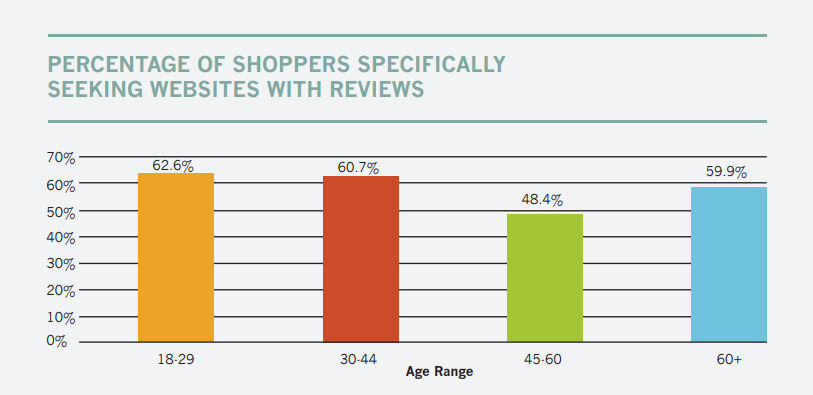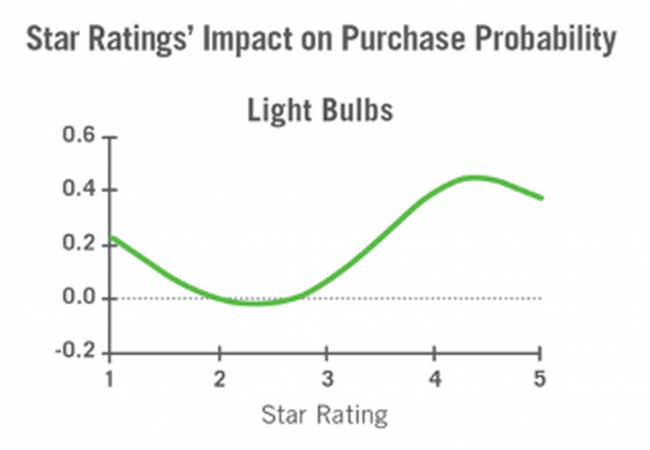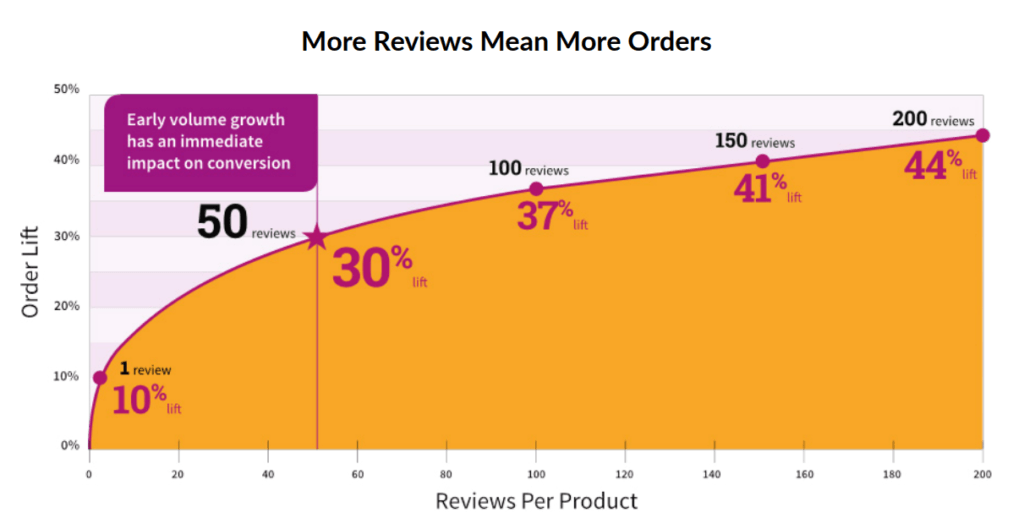Shopify Vs Amazon Reviews

Shopify recently overtook eBay as the world’s second largest ecommerce site and is now contending head-on with Amazon for first place. But how exactly are Shopify and Amazon different? Do reviews differ across these two platforms? (Hint: They do!) And, if so, what exactly are the differences?
First of All, Why Are Reviews Important?
Regardless of whether you shop on Amazon or a brand’s Shopify site, I can guarantee—with 95% accuracy—that you try to look for reviews on a product before you purchase it. I’ll do one better: You’re probably repelled when you try to seek out reviews but can’t find them.
Why?
Reviews are social proof. As consumers, we need validation that what we’re purchasing works. This doesn’t necessarily mean we’re scanning for functional deficiencies; by “works,” I mean we need to know whether what we’re purchasing satisfies our needs. And the best way to determine this is to see whether other people, just like yourself, can testify to that.
As consumers become increasingly wary of mass media and traditional forms of advertising, businesses need to find different ways of enhancing brand image. Trust is the cornerstone of marketing, and that’s exactly why real, authentic customer reviews are one of the best forms of user-generated content (UGC) brands can leverage to boost their conversions and build rapport with customers.

The Fundamental Difference (And Reviewerly's Biggest Mistake)
Marketplaces Vs Independent Websites
First, let’s understand the difference between marketplaces and independent websites. Marketplaces are two-sided platforms involving buyers and sellers—think Amazon, eBay, and Etsy. Here, sellers are members of the platform, which serves as their key distribution channel. Independent websites, on the other hand, sell by themselves; products are bought mainly through the store website, not through an intermediary like Amazon.
Many store owners start off on marketplaces because of the traffic and worldwide exposure.
The issue that marketplaces often pose, however, is that they offer too much exposure for too many stores. Consequently, competition is fierce and there is always the need to outmatch, or—in some cases—suffocate your competitors.
Once stores start generating some sales, they often branch out to Shopify to build out their own brand presence. This way, product listings are not in a constant battle for attention with competitors. You own your brand, and all of the products featured here are yours.
This is not to say marketplaces and independent websites are mutually exclusive (or that owning an independent website is necessarily a smarter move). Many store owners will sell on both channels to maximize sales potential. Still, when entrepreneurs think about creating their own ecommerce startup, the end vision is (usually) to build a website from which most of their sales will arise.
Back to Reviews (And the Age Old Question of Quality vs Quantity)
So how does all of this fit into reviews?
On Amazon (and when I say Amazon, I am also referring to all marketplaces), the quantity of reviews matter most. And that is precisely because of the intense competition between sellers for customer reviews on their respective product listings. Type in something like “towels,” and you’ll find dozens of products with varying review counts. Which one compels you most? Which product are you most likely to buy? The product with the highest number of positive reviews, obviously! And so, all the other products with fewer reviews are shunned by customers as the top-reviewed product relishes in all the glory (and cash).
Well, you might argue, “Yeah, but the quality of reviews matters, too. For example, they need to be positively rated.” You’re right on. No one will buy a product with 1,000 reviews if they are all one-star.

Yet, this is not what I mean by quality. Star ratings alone contribute very little to the quality of a review, insofar as quality is defined by a review’s trustworthiness. Modern-day consumers are not stupid. They know many reviews are fake/paid-for and look for more than just star ratings. They wan’t to see detailed, authentic, well-formed reviews written by real people.
So, I’m not saying quality reviews don’t matter on Amazon, but rather that quantity still takes precedence.
Now, on Shopify (and, by extension, all websites hosted on an ecommerce platform), things are completely reversed: It’s the quality that takes precedence, that matters most. Why? Not because of the lack of competing stores, but because of the lack of competing product listings. Because all the products on your website are your own (even if you’re a dropshipper, the products here are all yours for sale), customers won’t be benchmarking the number of reviews your products have to those of a competitor. As a result, review quantity is NOT nearly as important.
Research shows that, after 50 reviews on a product, you start seeing diminishing returns. This means two things:
• Your first 50 reviews must be as high-quality as possible
• You only need 50 reviews to optimize social proof for a product. (NOTE: More reviews still means increased conversions, but the increase per review significantly drops)

Of course, this reasoning doesn’t apply to Amazon products as much since it’s great if you have 50 reviews and all, but if your competitor’s product has 500 reviews, it’s pretty clear who your “customer” will go for.
Our Dumb Mistake
Reviewerly’s biggest mistake was not seeing the difference between Shopify and Amazon reviews earlier on. We assumed Shopify store owners just wanted to see reviews come in as fast as possible (the Amazon mindset, which we were more accustomed to), when, in reality, they wanted to see higher quality reviews—even at the expense of efficiency.
So, in light of this discovery, we did a bit of a pivot.
I won’t go into all the changes, but after finding out just how important quality reviews were for Shopify stores in particular, we refocused Reviewerly on generating photo reviews—they are harder to obtain but so much more worth it for the authenticity they demonstrate. 🙂
Summary
• Reviews are the best form of user-generated content to boost sale conversions
• Marketplaces are good for traffic but have fierce competition; independent websites are good for brand awareness but are harder to start up
• On Shopify, review quality takes precedence; on Amazon, review quantity takes precedence (to outmatch competition)
• >50 reviews per product, you begin to see diminishing returns. In other words, the first 50 reviews are the most valuable
• Photo reviews are infinitely more authentic than text reviews
Want 75% OFF Reviewerly?



1 Comment
Peter Yang · October 5, 2019 at 12:49 pm
Medium post served: https://bit.ly/2MePumB. Give us some claps, won’t you! 😉
Comments are closed.